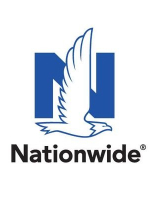08/11/2023 — Key takeaways:
- In 2021, nearly 16% of Americans had at some point earned money from an online gig platform.
- Solo 401(k) accounts, Health Savings Accounts, SEP IRAs, Traditional and Roth IRAs, and brokerage accounts are ways self-employed or gig-work clients can save for retirement.
- A great benefit of a Solo 401(k) in particular is that an employee can save nearly 6x what they’d otherwise save in an individual retirement account (IRA).
For your clients who are self-employed, they may enjoy perks like being their own boss, having greater work flexibility, or building a business that they can pass on to their kids or grandkids. But self-employed clients may also miss out on the benefits of a typical 9-5 like a 401(k) with employer match or employer-subsidized health insurance—and it can be a unique challenge to advise them on how to save for retirement.
As of March 2023, its estimated that 9.84 million Americans are self-employed, which is nearly 3% of the population.1 And in 2021, nearly 16% of Americans had at some point earned money from an online gig platform.2 There are many options for clients earning self-employment income, and the different combinations of investment considerations they may want to pursue will depend on their financial goals. In this blog we’ll discuss less-common retirement savings accounts and savings vehicles utilized by people who are self-employed.
Solo 401k
A Solo 401(k), sometimes called a Solo-k, Uni-k or One-participant k, is a traditional 401(k) plan that covers a business owner (and potentially their spouse) with no employees.3 Your self-employed clients can leverage a Solo 401(k), essentially acting as the employee and the employer, and they can make contributions as both through elective deferrals and employer non-elective contributions.4 The upside of a Solo 401(k) is that an employee can save nearly 6x what they could otherwise save in an individual retirement account (IRA). In 2023, the IRS limit for total contributions to a Solo-k is $66,000.
Simplified Employee Pension
A simplified employee pension plan, or SEP IRA, will allow your self-employed clients to contribute as much as 25% of their net earnings in retirement accounts. Employers can also utilize these accounts for their employees. It’s important to note that SEP-IRA accounts function just like traditional IRAs and follow the same investment, distribution, and rollover rules. Not all self-employed clients will qualify for this particular plan, but eligibility requirements are available here from the IRS and can be worked through with a tax professional.
Individual Retirement Accounts
And of course, your freelance clients can contribute to a Roth IRA or Traditional IRA. Roth IRA contributions are made on an after-tax basis, but qualified distributions from a Roth IRA in retirement are generally tax-free. One downside to saving via IRAs is the contribution limits. For 2023, eligible taxpayers can make a Roth IRA contribution of up to $6,500 ($7,500 if age 50 or older). In general, 2023 could be a really good year to fund a Roth account specifically because of low tax rates and changes coming in 2026 when the Tax Cuts and Jobs Act sunsets. In 2026, the standard deduction, tax brackets, and other changes will revert back to a framework similar to what we last saw in 2017.
Health Savings Accounts
Health Savings Accounts (HSAs) are another way in which your self-employed clients can save for retirement. To qualify for an HSA, your client will need to have a high-deductible health insurance plan. One of the great benefits of an HSA is that your client can utilize the funds at any time for health care-related expenses—and retirement could be a time when your client needs access to funds quickly. HSAs also allow you to invest funds so that the money can grow over time. For 2023, the HSA contribution limits for 2023 are $3,850 for a single person, and $7,750 for family coverage. Those 55 and older can contribute an additional $1,000 as a catch-up contribution. The contribution limits for 2024 are $4,150 for a single person and $8,300 for family coverage—and for 55 and older the catch-up contribution remains at $1,000.5 More financial institutions are offering HSAs now, making opening one easier than ever.
Brokerage Accounts
Remind clients that investing in a taxable account has its own advantages, too, namely that long-term capital gains on investments held for more than one year are taxed at lower capital gains tax rates. Clients may appreciate the flexibility of easy access to funds, no contribution limits, and no investment restrictions offered by a brokerage account.
Conclusion
Self-employed clients can take advantage of various accounts to save for retirement—and it’s recommended that your clients speak with a tax professional for more specific guidance. Not having a 401(k) may feel like a detriment to building retirement savings, but with the right strategies and accounts, your self-employed clients can build wealth just like any other saver.

